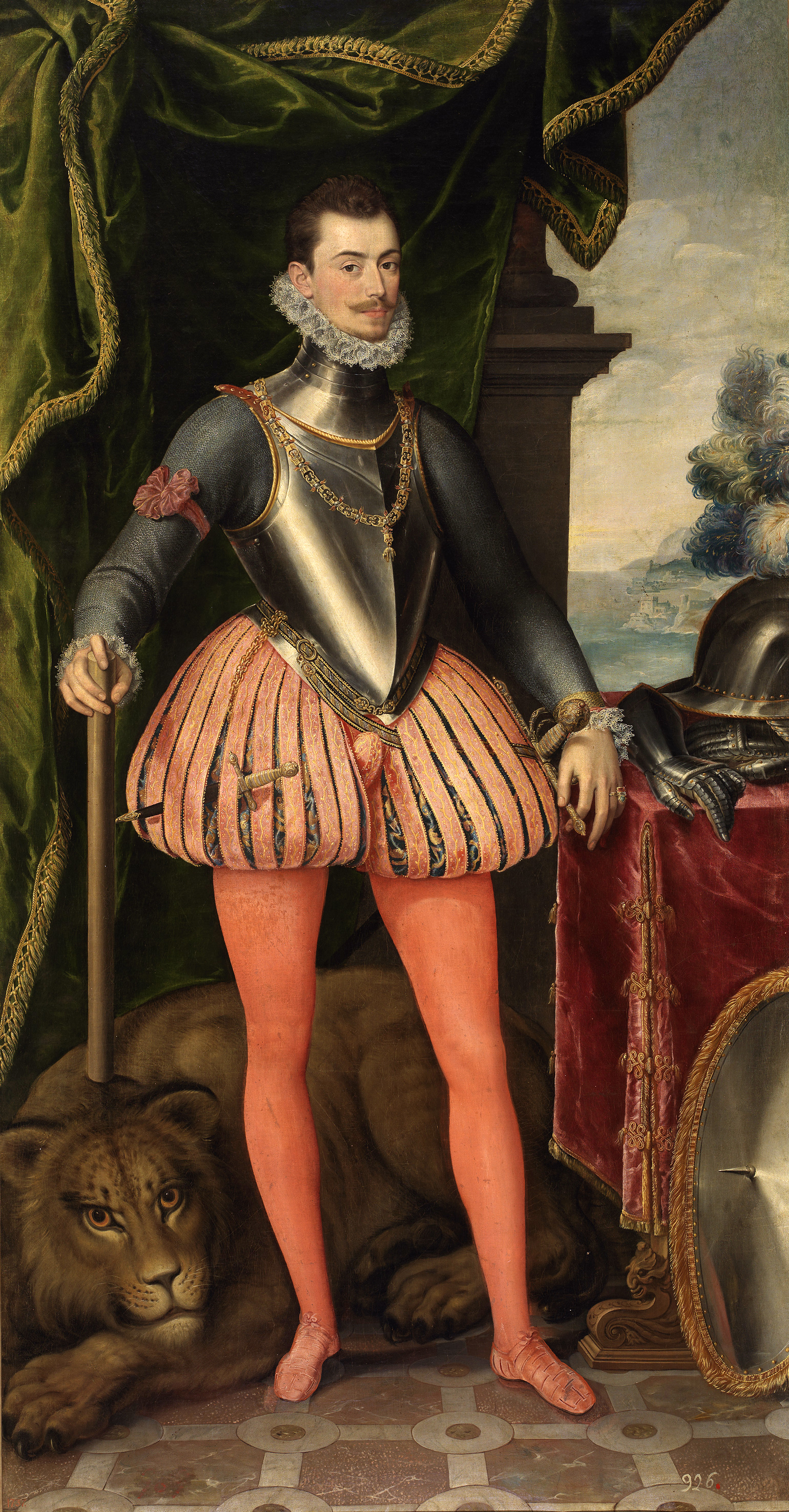Spanish breeches on:
[Wikipedia]
[Google]
[Amazon]
 Spanish breeches (''gregüescos'' in Spanish) are a type of
Spanish breeches (''gregüescos'' in Spanish) are a type of
breeches
Breeches ( ) are an article of clothing covering the body from the waist down, with separate coverings for each human leg, leg, usually stopping just below the knee, though in some cases reaching to the ankles. Formerly a standard item of Weste ...
or trousers for men, short, baggy (harem pants) and ungathered, usually accompanied by a codpiece
A codpiece () is a triangular piece that attached to the front of men's hose, covering the fly. It may be held in place by ties or buttons. It was an important fashion item of European clothing during the 15th–16th centuries. In the modern era ...
. Possibly of military origin, they were in fashion in Spain during the 16th century to the 17th.
After that period, they adopted different forms and lengths in Western Europe and the Spanish overseas courts, as an evolution of ''botargas'' and other types of hose
A hose is a flexible hollow tube designed to carry fluids from one location to another. Hoses are also sometimes called ''pipes'' (the word ''pipe'' usually refers to a rigid tube, whereas a hose is usually a flexible one), or more generally '' ...
or pantaloons evolving then to ''follados'' or ''afuellados''. They were described - in their varied typology - or ridiculed, by some of the best writers of the Spanish Golden Age
The Spanish Golden Age ( es, Siglo de Oro, links=no , "Golden Century") is a period of flourishing in arts and literature in Spain, coinciding with the political rise of the Spanish Empire under the Catholic Monarchs of Spain and the Spanish H ...
, such as Lope de Vega
Félix Lope de Vega y Carpio ( , ; 25 November 156227 August 1635) was a Spanish playwright, poet, and novelist. He was one of the key figures in the Spanish Golden Age of Baroque literature. His reputation in the world of Spanish literature ...
, Tirso de Molina
Gabriel Téllez ( 24 March 1583 20 February 1648), better known as Tirso de Molina, was a Spanish Baroque dramatist, poet and Roman Catholic monk. He is primarily known for writing ''The Trickster of Seville and the Stone Guest'', the play from ...
or Francisco de Quevedo
Francisco Gómez de Quevedo y Santibáñez Villegas, Knight of the Order of Santiago (; 14 September 1580 – 8 September 1645) was a Spanish nobleman, politician and writer of the Baroque era. Along with his lifelong rival, Luis de Góngora, ...
; and painted by Diego Velázquez
Diego Rodríguez de Silva y Velázquez (baptized June 6, 1599August 6, 1660) was a Spanish painter, the leading artist in the court of King Philip IV of Spain and Portugal, and of the Spanish Golden Age. He was an individualistic artist of th ...
, Murillo or Alonso Sánchez Coello
Alonso Sánchez Coello ( 1531 – 8 August 1588) was an Iberian portrait painter of the Spanish Renaissance, Spanish and Portuguese Renaissance. He is mainly known for his portrait paintings executed in a style which combines the objectivity of t ...
, among other artists from the major European courts, as Titian
Tiziano Vecelli or Vecellio (; 27 August 1576), known in English as Titian ( ), was an Italians, Italian (Republic of Venice, Venetian) painter of the Renaissance, considered the most important member of the 16th-century Venetian school (art), ...
.
See also
*Petticoat breeches
Petticoat breeches were voluminously wide, pleated pants, reminiscent of a skirt, worn by men in Western Europe during the 1650s and early 1660s. The very full loose breeches were usually decorated with loops of ribbons on the waist and around the ...
*1600–1650 in fashion
Sixteen or 16 may refer to:
*16 (number), the natural number following 15 and preceding 17
*one of the years 16 BC, AD 16, 1916, 2016
Films
* '' Pathinaaru'' or ''Sixteen'', a 2010 Tamil film
* ''Sixteen'' (1943 film), a 1943 Argentine film ...
*1650–1700 in fashion
Year 165 ( CLXV) was a common year starting on Monday (link will display the full calendar) of the Julian calendar. At the time, it was known as the Year of the Consulship of Orfitus and Pudens (or, less frequently, year 918 ''Ab urbe condita'' ...
References
Notes Bibliography * Arnold, Janet: ''Patterns of Fashion: the cut and construction of clothes for men and women 1560–1620'', Macmillan 1985. Revised edition 1986. () Breeches {{clothing-stub